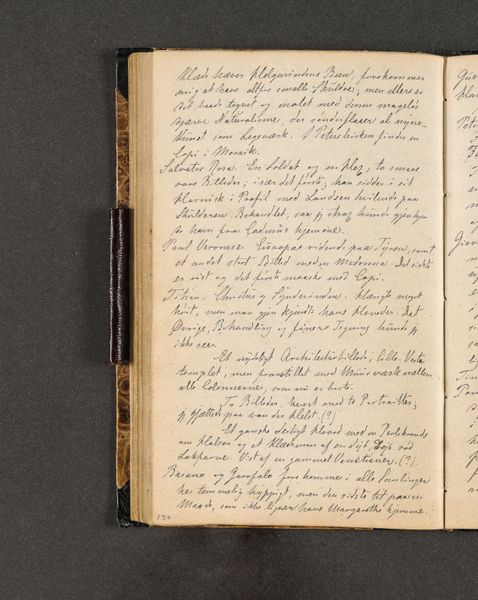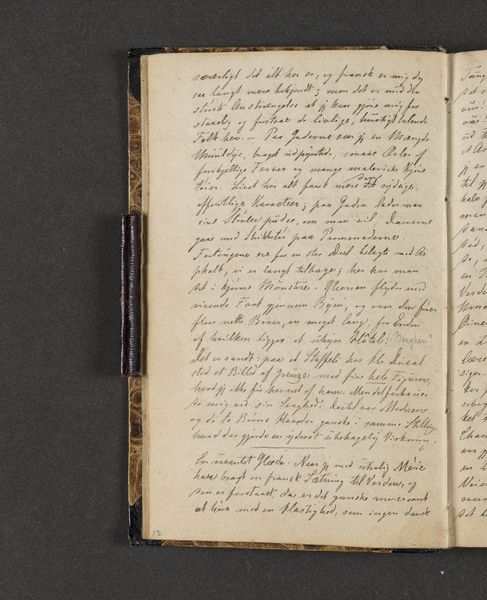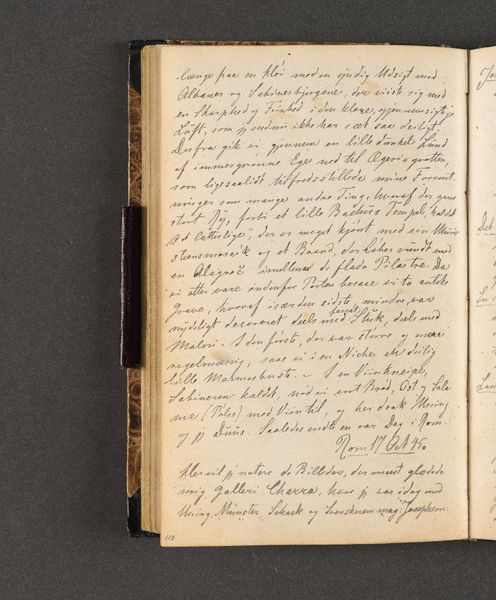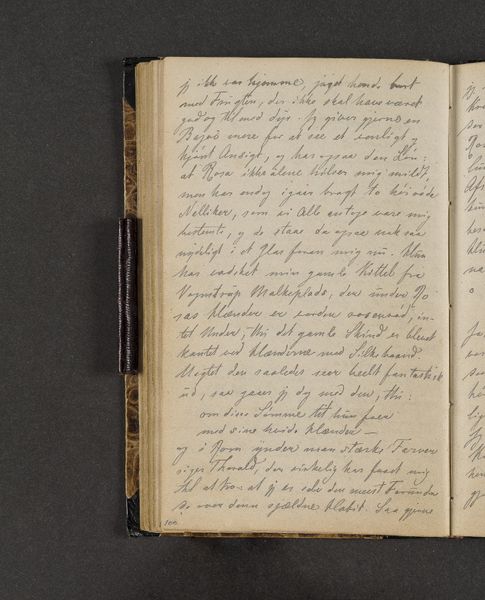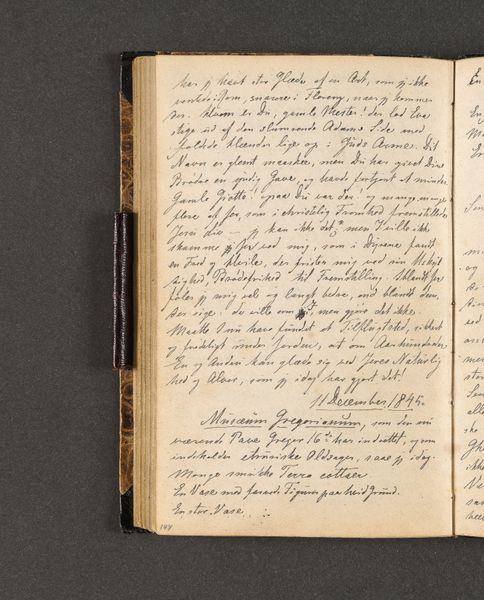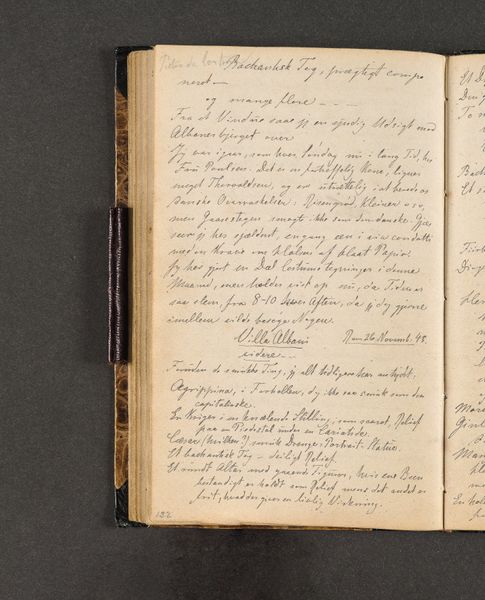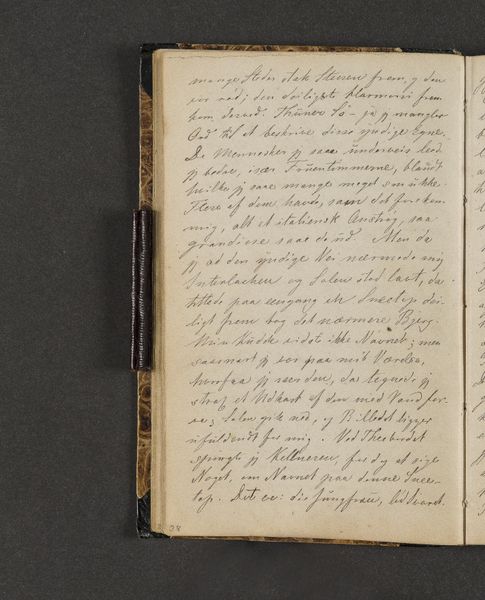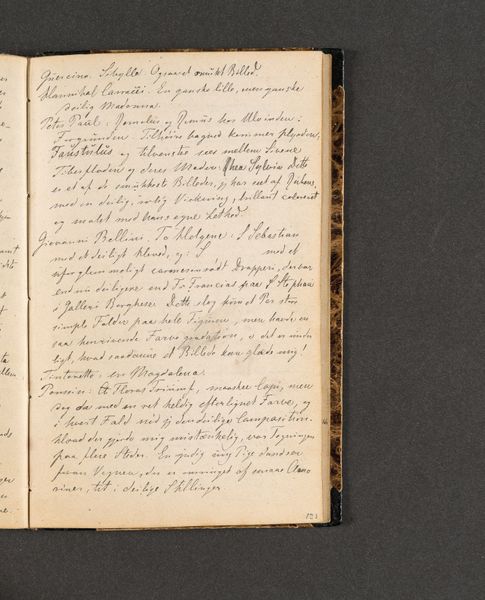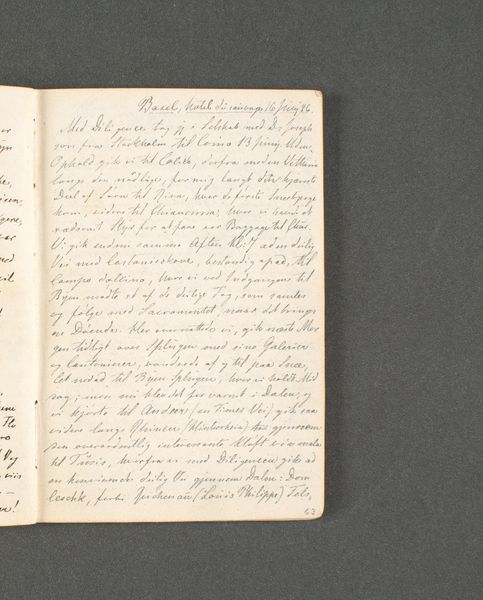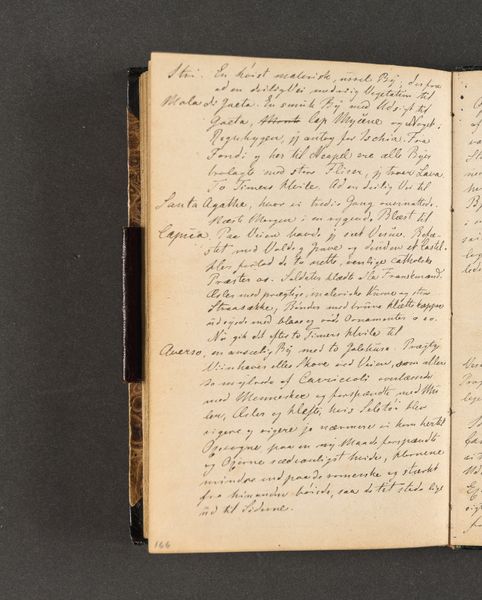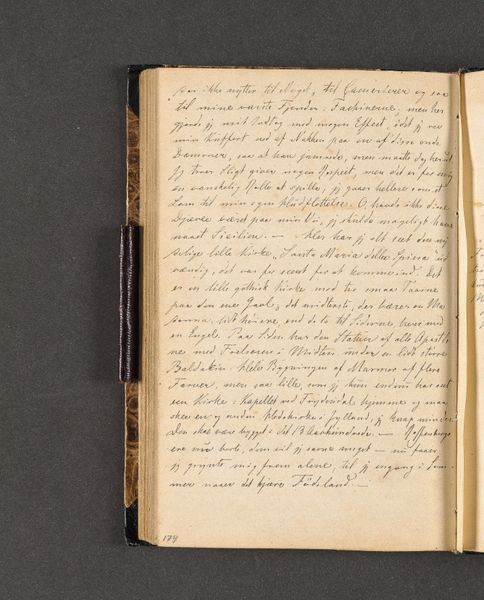
drawing
#
drawing
#
book binding
#
paper non-digital material
#
paperlike
#
sketch book
#
personal journal design
#
paper texture
#
personal sketchbook
#
different material of paper
#
folded paper
#
design on paper
Dimensions: 161 mm (height) x 103 mm (width) x 11 mm (depth) (monteringsmaal)
Editor: We're looking at "Rejsedagbog," or "Travel Journal," created in 1846 by Johan Thomas Lundbye. It seems to be a personal sketchbook of sorts. The aged paper and the artist’s handwriting give it a very intimate feeling. How do you interpret this work? Curator: What strikes me immediately is how this everyday object—a travel journal—becomes a repository of cultural memory. Lundbye isn't just recording what he sees; he's imbuing these places with his own experience, layered upon layers of history and artistic tradition. Do you see how the handwritten notes, almost like runes, create a sense of personal narrative interwoven with larger cultural narratives? Editor: I see that. The text almost becomes an image in itself. Are there particular symbols or visual cues that stand out to you? Curator: Absolutely. The very act of journaling, of recording one's travels, is symbolic. It suggests a desire to connect with the world, to document it, and perhaps even to claim ownership of it through representation. Also, consider the materiality of the book itself: paper has its own history and evokes personal associations as a vehicle for thoughts and record keeping. Editor: It's fascinating to think about how an object as simple as a journal can hold so much cultural weight. Curator: Exactly. And Lundbye, as an artist, is acutely aware of this. He uses the journal to inscribe his own experiences, linking them to the landscapes he observes. So, the journal is more than a record—it is a cultural artifact, rich in symbolic value. Editor: I hadn't thought about it that way, it really makes you see it in a different light! Curator: I agree, it’s often the most common objects that possess the deepest layers of significance.
Comments
No comments
Be the first to comment and join the conversation on the ultimate creative platform.
